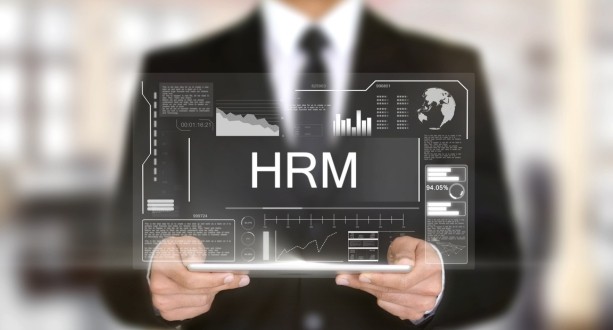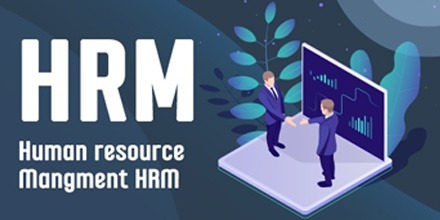HRM means Human resource management. HRM is the process of employing people, teaching them, paying them, establishing policies for them, and devising ways of keeping them on board. HRM has evolved significantly over the last two decades. Processing payroll, providing birthday presents to employees, organising business outings, and double-checking documents were all part of HRM in the past. In other words, it’s more of an administrator function than a strategic location critical to the organization’s success. Jack Welch, the former CEO of General Electric and a management guru, is in charge of HRM’s new role.
It’s critical to emphasise at the outset of this book that human resource management is a responsibility shared by all managers. We shall do all or at minimum some HRM tasks even if we do not hold the title of the HR manager. HRM, or human resource management, is the process by which a business makes personnel choices. So according to Michael Beer’s Harvard Model of Human Resource Management, it’s a strategic distinctive approach to employment management, growth, and well-being of people who work in an organisation. Human resources management encompasses all management choices and activities that impact the organization’s relationship with its employees, or human resources.
Hrm is also a broad and strategic approach to managing people, as well as the culture and environment of the workplace. It allows employees to participate successfully and productively in the overall corporate direction as well as achievement of the organisation’s goals and objectives if done correctly. Members of the department supply the information, tools, education, administrative support, coaching, legal and administrative counsel, and talent acquisition oversight that the remainder of the business requires to run smoothly.
What is the Process of Human Resource Management?
HRM workers are in charge of making sure that the organization’s overall goal, vision, and values are clear to everyone and give people a reason to want to work there. These elements can inspire employees and make them feel like they’re a part of something bigger than themselves. Employee and outreach programs are examples of further HRM-sponsored activities. They are frequently supervisors and members of employee teams that deal with scholarships and grants, employee engagement initiatives, and family gatherings.
Line managers, who are directly responsible for their reporting staff members’ engagement, contribution, and productivity, also execute HRM tasks. Managers have a big part in the recruitment process in a fully integrated performance management system, and they assume ownership of it. They’re also in charge of ensuring that excellent personnel are developed and retained. Conventional personnel, administrative, and transactional jobs are rapidly being outsourced, and HRM is shifting away from them. HRM is now expected to bring value to employee strategy utilisation and ensure that employee activities planned and implemented have a good demonstrable impact on the business.
HRM employees must also assist in protecting their employer and organisation from litigation and the associated workplace disruption. To service all of an organisation and its stakeholders: consumers, leaders, owners, administrators, employees, and investors, they must strike a balance.
Other than related to legal and clerical requirements, HRM department functions can be divided by person, organisational, and career domains. Individual management comprises assisting people in identifying their strengths and limitations, correcting their flaws, and ultimately contributing their best to the company.
Performance evaluations, training, and testing are just a few of the ways these responsibilities are carried out. The goal of organisational development is to create a successful system that makes the most of human and other resources. The goal of organisational development is to create a successful system that makes the most of human and other resources.
The establishment and management of a change programme, which allows the organisation to adjust to changing external and internal factors, is also part of this crucial responsibility. Career development is the third role, and it entails pairing people with the best employment and career routes.
HRM departments should be located near the theoretical organisational centre, with easy access to everyone divisions and levels of management. A vice president may lead the HRM function in larger firms, whereas a middle-level manager will lead HRM in smaller organisations. In any case, so because HRM department is responsible for managing employee productivity and development at all levels, the senior HRM manager should have access to and support from key decision makers. Furthermore, the HRM function should be situated such that it has vertical access to all of the company’s departments or can effectively communicate with them.
Evolution of Human resource management
Human resource management originated from personnel management, a former management technique for managing employees. To understand the growth of personnel management, one must first understand the history of centuries of great psychologists’ research into human behaviour and how they react in specific situations. Elton Mayo, an Australian psychologist, was one of them, and in 1924, he conducted a number of tests on human behaviour in various scenarios.
He was a firm believer in work-life balance as a means of increasing worker productivity, and he placed a heavy emphasis on the impact of human relations on worker productivity, earning him the title of “Father of Human Resources Management.”
Human Resources Roles and Responsibilities
Many firms regard human resources departments to be critical. They work in a variety of fields and do a variety of tasks on a daily basis.
Human resources departments serve as a link between employers and employees, ensuring that both are well-equipped to perform their tasks safely and successfully. Some businesses have their own HR department, while others hire a third-party service. HR managers, in either role, contribute to the workplace’s structural and organisational stability. While human resources is commonly thought of as the company’s disciplinary arm, it actually has a lot of supportive tasks, such as the ones we’ll go over on this page.
- Hiring and Recruitment
Attracting and maintaining the best personnel in the market is a top goal for many businesses. HR managers play a critical part in this, monitoring the hiring and selection process and assisting in the development of the company’s future. To begin, HR may consult with a department supervisor or manager to learn more about an open position, including the role’s needs and desirable candidate characteristics. After that, the HR department can come up with a plan for hiring people. This could mean posting job openings both inside and outside the company, looking at resumes and other information about people who want to work and doing first interviews.
- Development and Training
The HR department’s job includes finding qualified people to work there. HR managers may also be in charge of starting staff development programmes so that the company can keep its best employees and keep up with the competition. Further on-the-job education, professional development programmes, or educational opportunities that help employees to develop and grow in their existing roles or prepare them for career promotion within the organization could be included in this category
- Employer-Employee Relations
Employer-employee interactions are another facet of the work that HR departments handle. HR departments use this function to assist employers and employees perceive each other as equal contributors to the organisation, establishing a healthy working environment. HR managers may also assist in the development and implementation of company policies that promote justice and equity inside the workplace.
- Keep the company culture alive.
Company culture includes things like good ways to hire people, ongoing training, and good relationships between employees. But it’s not always something you can do and then leave behind. The HR department works all the time to make sure that the company’s culture stays strong over time.
HR managers may discuss the company’s values, conventions, and vision with workers throughout the onboarding process, familiarising them with the organization’s overall ethos.
- Employee Benefits Management
On the business side, the HR department is in charge of both required and optional company perks. Some benefits, like Social Welfare, unemployment, and worker’s compensation, are required by law, but others, like paid time off, disability income, and gym costs, are up to the company and give new and current employees another reason to work there.
- Make a Workplace That Is Safe
HR is responsible for employee benefits, as well as their physical and emotional wellness at work. HR is responsible for ensuring that the workplace is physically safe. This is usually accomplished by analysing the job site and preventing and mitigating dangers. The link will open in a new window. HR may also build up safety programmes via risk management education and give information on ways and procedures for any emergency scenarios that may arise.
Advantages of HRM:
- Strategic Planning:
HRM boosts the bottom line of a company by promoting positive outcomes, which leads to organisational success. Human resource management professionals are involved in the corporate decision-making process that underpins human resource decisions.
- Branding on the inside:
One of HRM’s most significant responsibilities is to build a positive brand for the company’s employees and stakeholders. According to CultureIQ, developing an employee brand and corporate culture helps businesses attract qualified candidates, diverse applicants (l), employee referrals, and hire the right people.
- Big Corporations’ Employee Benefits
Small firms’ employee benefits packages are usually limited, but when you join with a seasoned PEO, size no longer matters. You’ll be able to choose from a variety of insurance companies, with benefits for employees as well as great options for couples and pets. It will guarantee that your current workers are happy.
- The following are the mission, vision, values, and objectives:
HRM, when managed strategically, can assist a company in achieving its mission, vision, values, and objectives. Employees can then determine where they fit within the company, which aids in the development and clarification of their tasks.
- Improved Onboarding
Even if you find the perfect candidate who would fit right in with your company, onboarding may make or break an applicant’s career. The onboarding process at your firm is how you make a strong first impression on new employees, welcome them to the company, and prepare them to thrive in their new role. Onboarding, if done poorly, may have serious consequences and put your new hire up for failure.
- Recruitment and Training
Without a very well recruiting approach, finding the right people is difficult. Management of human resources is your best buddy when it comes to a job as important as recruiting. They’ll not only contact all qualified candidates within a few days, but they’ll also construct job descriptions that are specific to the position.
- Human resources can be accessed from anywhere.
One element that makes HR more complicated is the dependence on office-based resources to execute responsibilities. If you work with an outside PEO, you’ll have access to a full HR software system with self-service and mobile tools that will allow you to control your HR in real time. This saves you time and energy while also providing you with the information you require to make the best decisions possible.
- Relationship Building
People do better at work when they are pleased. Nobody wants to work in an environment where everything is constantly the same. Many individuals consider their workplace to be a second home. People spend the majority of their time at work, often even more than at home. We can’t say enough about how important working relationships, their honesty, and their principles are.
- Compliance Maintenance
HR professionals make sure that all federal and state labour laws are followed by the company. They fill out forms that show that the people who work for the company are allowed to work in the United States. They also retain application flow logs, documented affirmative action plans, and disparate impact analyses to ensure that enterprises receiving federal or state government contracts are abiding with the law.
Disadvantages of HRM
- Higher competition:
Working as a human resource manager in a firm can be the most responsible profession, but it also comes with a higher price.
Human resource management, as previously stated in the benefits section, promotes job satisfaction. And this type of job pleasure breeds competitiveness among coworkers.
- Keeping a safe distance:
Most employees in global companies believe that their boss is hard to understand, but the truth is that being a Human resource manager is not as simple as it appears. Every employee of the company is given a job description that specifies all of their responsibilities and expected behaviours.
- Lower recognition value:
When someone recognises the effort that they accomplish in their personal and professional life, it makes them happy. He or she also expects a certain amount of job recognition as a human resource manager.
The human resource manager is frequently undervalued in terms of recognition.
As a result, many people view the human resource manager’s job description to be underdeveloped and unsuitable for advancement.
- Greater experience is expected:
Because the human resource manager role carries such a high level of responsibility, the upper division expects a lot of expertise in a related sector of work when employing an HR manager. Furthermore, expecting a higher level of experience can be one of the drawbacks for someone seeking a job.
- Legal responsibilities:
When it comes to becoming a human resource manager, there are a variety of legal responsibilities, the most important of which is that the HR manager must properly utilise his or her legal skills to avoid potential problems.
- Conflicts of interest:
A human resources manager is in charge of a company’s financial and internal operations. In addition, the company’s owners may disagree with the human resource manager’s point of view while doing such activities. And at that point, the HR manager must obey the company owner’s commands, even if the decision is risky.
As a result, workplace disagreements can lead to communication problems between employers and employees.
Features of HRM :
- Planning:
HRM’s planning function ensures that people and jobs are a good match while reducing staff shortages and surpluses. The HRP process is broken down into four sections: analysing existing human resource supply, forecasting human resource demand, balancing expected human resource need with supply, and connecting the first three processes to company objectives.
- Controlling:
Following the planning, organising, and directing of a worker’s performance, it must be reviewed, checked, and compared to the organization’s goals. Control measures need to be implemented if the plan is not followed.
- Directing:
This entails motivating people at all levels to work hard and contribute as much as possible to the organization’s success. Employees are encouraged and told to achieve their best and realise their full potential in this HRM function.
- Organizing:
Organizing is an HRM role that entails creating a system for the organisation to achieve its objectives. An organisational structure, which displays who is in charge of a company, is frequently used to demonstrate how the structure is set up.
Human resource management’s functions
- Recruitment and hiring
Hiring is one of the most well-known human resource management functions. In order to be competitive in their industry, businesses must find and keep the best people. In most cases, HR meets with a hiring manager and discusses open positions and learns more about the types of people who would be best fit for them. HR considers education, experience, and talents, but they must also consider personality qualities and working styles to ensure that employees will get along in the long run.
- Onboarding as well as continued training and development are essential.
When a company hires someone, it’s vital that they receive the necessary orientation and training so that they can function effectively. Human resource management includes training new employees on the company’s mission, vision, or goals, as well as internal policies and processes. It may also include training on how to be safe, depending on the workplace.
- Managing worker and employer relationships
The success of a firm is determined by its employees, thus human resource management must guarantee that everyone gets along.This may include resolving disputes in high-stress situations or establishing win-win agreements. It might also include giving staff with training in areas like as emotional management or mindfulness so that they have the skills they need to do their jobs properly.
- Managing discipline actions
Human resource management may be tricky when it comes to disciplining workers. HR professionals must have a procedure for punishing workers in place and make sure that all new hires are aware of it. If something occurs that necessitates disciplinary action, HR may be required to issue a warning letter to the employee and keep it on file. Depending on the nature of the issue, the employee may be suspended, placed on probation, or fired. It’s ideal to have a legal professional on the HR team who can guarantee that the company follows all labour standards when it comes to disciplinary processes.
HRM’s goals are as follows:
1) Helping the group get where it wants to go.
2)Ensure that human resources are well utilised and that they continue to grow as much as feasible.
3) Always treat others with respect. To discover what people desire and provide it to them.
4) Ascertain that each individual’s objectives are aligned with the objectives of the organisation.
5) Increase and maintain employee morale.
6) Provide well-trained and motivated personnel to the organisation.
7) As much as possible, enhance each employee’s contentment and self-esteem.
8) To create and maintain a positive work environment.
9) To pay close attention to society’s moral and social needs.







